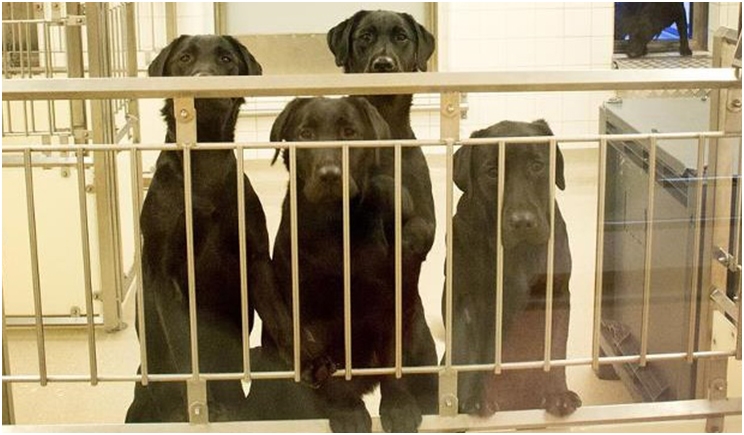
Swedish animal rights group Djurrättsalliansen reports that six Labrador retrievers have been euthanized as part of dental implant research at the University of Gothenberg’s Sahlgrenska Academy. While the activists say that more than 84,000 people signed a petition requesting an end to the experiments and release of the dogs, university officials say their termination was necessary to complete the researchers’ investigation.
“It is with a heavy heart we have to write that we did not succeed to save these six dogs’ lives. We all feel grief now. However, we cannot lose hope or forget about the power we all have together. We are fighting for another world, a world where animals are not seen as objects, and the change that must be made is going on here and now,” the group said in a statement.
“We do understand how animal testing can arouse strong emotions, but we also would like to stress the fact that periodontitis is still a major public health issue, and the research conducted here is crucial to many people,” said dean Agneta Holmang and pro-dean Henrik Hagberg in a statement.
The university notes that it conducts its experiments in an overarching system comprising a combination of experimental and clinical research. Methods include materials testing with cell culture techniques while implant osseointegration and ability to withstand complications are investigated using animal testing.
The use of dogs gives researchers unique opportunities to simulate the human oral cavity and jaw, and the same methods that are used on human patients can be implemented, the university says. Animal experiments also enable researchers to take tissue samples, which is not possible on human patients, the university adds.
Furthermore, the animals always receive an analgesic before any potential painful procedures. To answer the questions that it poses, the current study does not allow for blood samples and biopsies to the extent it requires without putting the dogs down. Veterinarians administered the euthanasia.
During the experiment, the university says that the dogs are well cared for and housed in an appropriate environment approved by the Swedish Board of Agriculture. The local County Administrative Board manages the animals and conducts regular inspections. Handlers spend time with the dogs, ensuring they are well stimulated and exercised. Injuries and illnesses are treated immediately.
Djurrättsalliansen disputes the university’s description of the dogs’ care, however. It notes that one of the dogs was kept in a bare room and developed bed sores that required treatment with three different antibiotics. The group also cites experiment journals reporting insecure and fearful behavior, confusion, stress, and difficulties sleeping, in addition to issues involving wounds and inappropriate items eaten.
The current experiment, Djurrättsalliansen says, involved each dog being sedated six times and having 35% of its teeth removed. Also, the group says that the university has been conducting these types of experiments on dogs since 1996, with at least 206 dogs used and killed. Instead, the group believes researchers should conduct animal-free testing.
“Djurrättsalliansen mean that it is better to invest in animal-free methods and animal-free research and leave the animals alone,” the group said in a statement. “Djurrättsalliansen oppose all use and exploitation of animals, no matter if Labradors, pigs, cats, rabbits, guinea pigs, or mice are being used.”
“In general, the implementation of new and animal-free methods in medical research is becoming more common, which is also true for the implant research in Gothenburg,” Holmang and Hagberg said in their statement. “The use of cell cultures and biopsies from humans is also increasing. Animal testing is also replaced by refined planning and advanced statistical methods.”
The university adds that these methods must be weighed against each other before each study involving animal testing. The principal researcher presents the considerations that have been made and why the testing cannot be replaced by other methods to an animal testing ethics committee under the Swedish Board of Agriculture. Once the scope of the project is determined, the methods cannot be changed.
“We acknowledge that we have to be clearer in our communication about why and how we conduct research and how we are working to reduce, refine, and replace animal testing,” Holmang and Hagberg said. “It is also important to explain why animal testing is carried out and how it contributes to the accumulation of knowledge in research. This paves the way for a serious discussion about what we want to change and should change about the studies.”
Related Articles
Mouth Rinse Could Prevent Peri-Implantitis
Simplifying Full-Arch Implantology With Digital Denitstry
Using a Unique and Innovative Implant System











